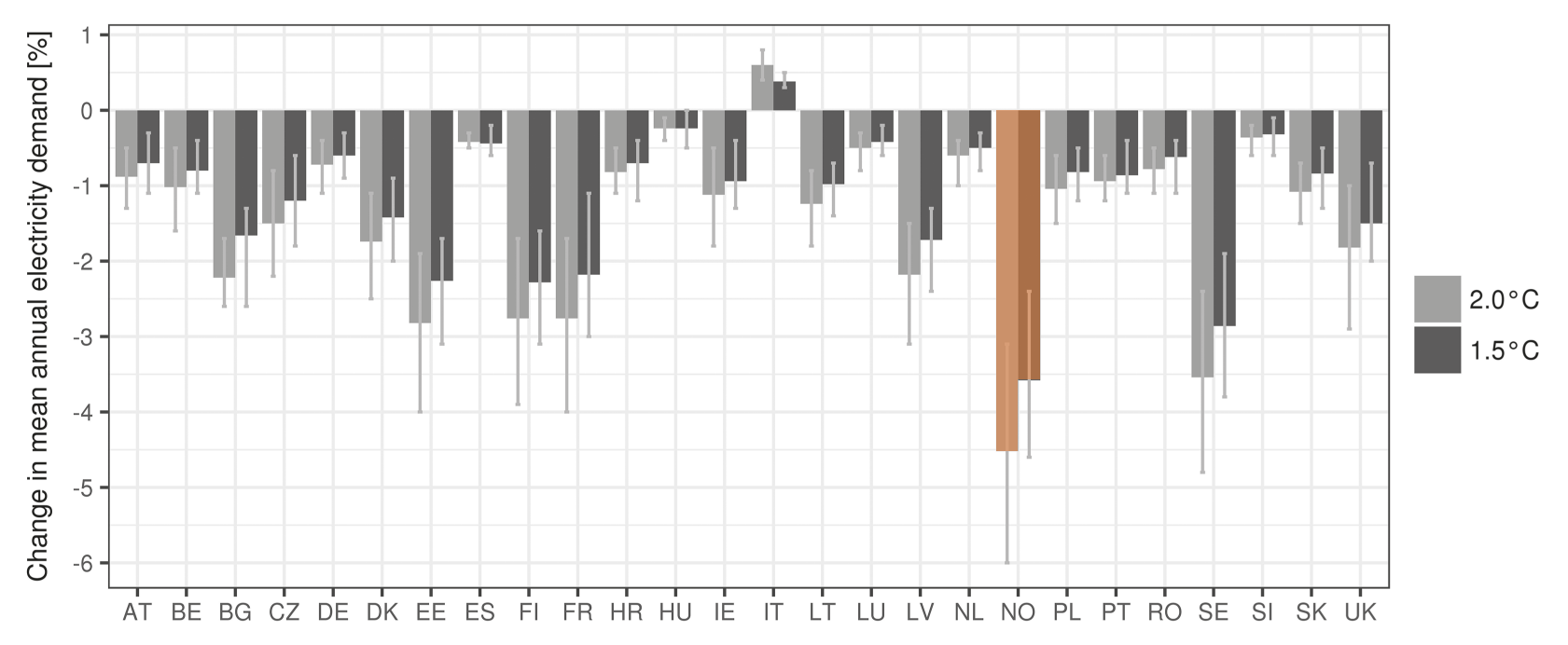Researchers in seven European countries have analyzed the effect of higher temperatures on tourism, power demand and agriculture in Europe.

«For Norway, electricity demand is the big one», says Stefan Sobolowski.
Sobolowski, from the Bjerknes Centre for Climate Research and Uni Research, is one of the researchers behind the study, recently published in the journal Earth’s Future. Their results indicate that climate change can reduce the need for heating in Norway, thereby reducing the demand for electricity.
The positive effect on electricity demand outside of Scandinavia is limited. In Southern and Central Europe, the benefits of milder winters will soon be outweighed by an increased demand for air conditioning in summer. This may require more electricity.
“In Scandinavia, this will not likely occur in this century”, says Stefan Sobolowski.
The results presented in the study are limited to a global warming of 1.5 and 2 degrees Celsius. But even with a higher temperature increase, he believes Norway will save more electricity on milder winters than the extra needed for cooling in hotter summers.
The results are based on changes in air temperature and precipitation. Changes in consumer demand or technological development are not considered.

A question of 1.5 or 2
The overarching question the scientists behind the study have asked, is how much damage can be avoided if we manage to keep the global temperature rise below 1.5 degrees, compared to 2 degrees. These targets were set at the climate meeting in Paris in 2015. This fall, the Intergovernmental Panel on Climate Change will publish a report of the consequences we will risk, even with a temperature rise limited to 1.5 degrees compared to preindustrial times.
In Southern Europe, a 1.5 degree temperature increase will make heat waves occur almost twice as frequently as in the preindustrial climate, according to an EOS article about the study.
In Scandinavia, Stefan Sobolowski and his colleagues expect only small changes in tourism and agriculture with temperature increases limited to 1.5 or 2 degrees. He still warns against taking that to indicate that people in Scandinavia will not notice the changes. A drier climate in the large agricultural regions in the Mediterranean region will have consequences far outside of the region.
«In Norwegian shops you see lots of fruit marked «Spain»”, he explains. “Indirectly we will be affected.”
Reference
Jacob, D., Kotova, L., Teichmann, C., Sobolowski, S. P., Vautard, R., Donnelly, C., Koutroulis, A. G., Grillakis, M. G., Tsanis, I. K., Damm, A., Sakalli, A. and van Vliet, M. T. (2018): Climate Impacts in Europe Under +1.5°C Global Warming. Earth's Future, 6: 264-285. doi:10.1002/2017EF000710

